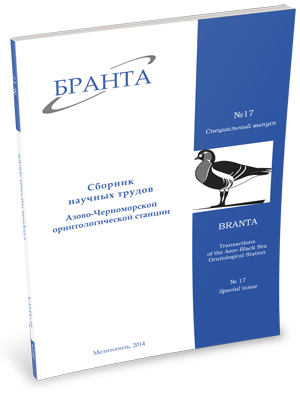
Transactions
of the Azov-Black Sea Ornithological Station



On the use and avoidance of birds overhead transmission lines in the Crimea
V. M. Kucherenko, Y. O. Andryushchenko, V. M. Popenko
The article covers the peculiarities of birds interaction with overhead transmission lines on the Crimean peninsula. Much of the material collected in the monitoring of deaths of wild birds from contact with three control overhead lines in the period from 1 April 2013. to 3 March 2014., on the southern coast of Central Sivash, along the eastern coast of lake of Sasyk and in the center of the Kerch Peninsula. The article presents data on the use of electric lines 86 bird species, 17 of which - for nesting. This is mainly forest-steppe and steppe Falconiformes, Crows and small Passeriformes species, to a lesser extent – wetland and forest species. Power line pylons compensates for the lack of natural nesting sites for many species of birds in the open landscapes of the steppe zone. Birds are often used for nesting metal openwork metallic and hollow concrete pillars. Observations allowed to reveal at least three strategies that birds use to avoid contact with power lines: the avoidance, the relative tolerance and the absolute tolerance. Relatively tolerant species most likely to encounter LEP and absolutely tolerant species - several less.
Read the paper in a PDF file